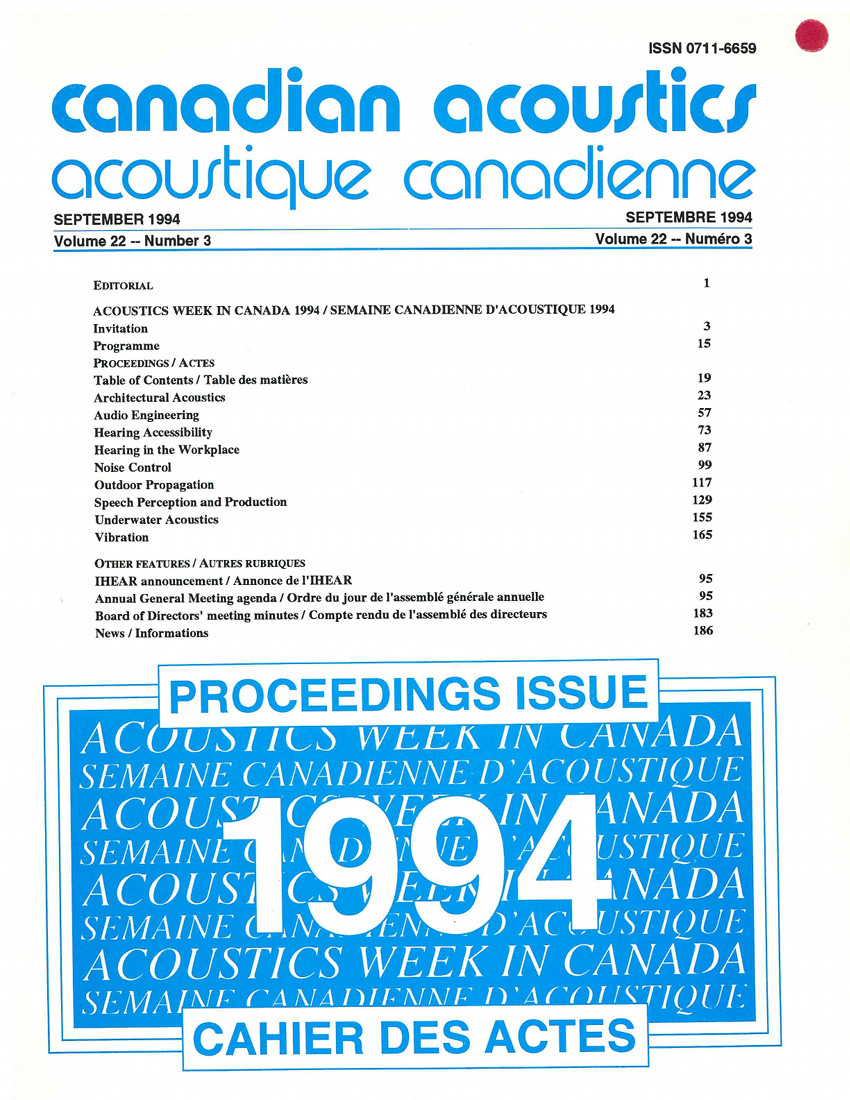Exercise-induced building vibrations: a modern-day happening
Keywords:
structural acoustics, structural engineering, vibrations, building vibrations, exercises, gymnasium, aerobics, floor vibrations, structural elements, tuned mass dampersAbstract
Rhythmic exercises in a small gymnasium on the top storey of a recently constructed office tower in downtown Ottawa were considered responsible for producing annoying vibrations in the upper floors of the 26-storey concrete building. The gymnasium was built and operated by a tenant which leased the top half of the office tower. The exercises, jumping, jumping jacks, side-to-side stepping, etc., were part of a corporate aerobics class which began each day at noon. The 1-hour class was generally well attended containing upwards of 50 participants. However, as in most office buildings, not all employees broke for lunch at the same time. Those who worked while the aerobics class was in progress found the induced floor vibrations in the upper storeys of the building highly annoying. For operational reasons, management wanted the aerobics classes to continue but not at the expense of staff productivity. They, therefore, sought schemes to reduce the dynamic response of the floors to the rhythmic activities taking place in the gymnasium. This paper briefly describes the investigation that was undertaken (i) to identify the structural elements within the building undergoing resonant or near-resonant behaviour during the classes and (ii) to recommend appropriate remedial measures (tuned mass dampers, stiffening of floor elements) to rectify the situationAdditional Files
Published
How to Cite
Issue
Section
License
Author Licensing Addendum
This Licensing Addendum ("Addendum") is entered into between the undersigned Author(s) and Canadian Acoustics journal published by the Canadian Acoustical Association (hereinafter referred to as the "Publisher"). The Author(s) and the Publisher agree as follows:
-
Retained Rights: The Author(s) retain(s) the following rights:
- The right to reproduce, distribute, and publicly display the Work on the Author's personal website or the website of the Author's institution.
- The right to use the Work in the Author's teaching activities and presentations.
- The right to include the Work in a compilation for the Author's personal use, not for sale.
-
Grant of License: The Author(s) grant(s) to the Publisher a worldwide exclusive license to publish, reproduce, distribute, and display the Work in Canadian Acoustics and any other formats and media deemed appropriate by the Publisher.
-
Attribution: The Publisher agrees to include proper attribution to the Author(s) in all publications and reproductions of the Work.
-
No Conflict: This Addendum is intended to be in harmony with, and not in conflict with, the terms and conditions of the original agreement entered into between the Author(s) and the Publisher.
-
Copyright Clause: Copyright on articles is held by the Author(s). The corresponding Author has the right to grant on behalf of all Authors and does grant on behalf of all Authors, a worldwide exclusive license to the Publisher and its licensees in perpetuity, in all forms, formats, and media (whether known now or created in the future), including but not limited to the rights to publish, reproduce, distribute, display, store, translate, create adaptations, reprints, include within collections, and create summaries, extracts, and/or abstracts of the Contribution.


